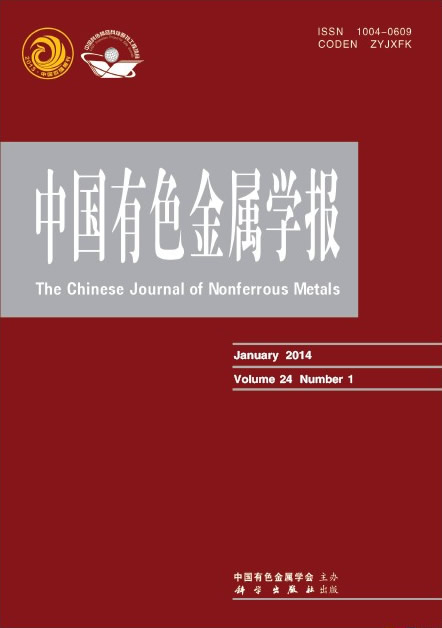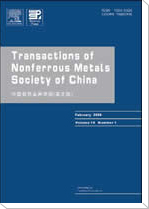(上海交通大学 材料科学与工程学院,上海 200240)
摘 要: 反铁磁MnFeCu合金的形状记忆效应来自于FCC-FCT马氏体相变。相比于其他合金,MnFeCu合金体系的点阵畸变度较小。通过极小形变近似理论计算点阵不变形变为孪晶切变的FCC-FCT马氏体相变的相关晶体学参数,得到形式简单的解析解,与实验测量结果相吻合。比较ID近似理论计算结果与经典的WLR理论计算结果,可以发现前者是后者的高阶近似,在点阵畸变度较小的情况下,两者的精度几乎相同。由此可见,对于点阵畸变度较小的合金体系,应用ID近似理论预测相变晶体学极其便利,可以给出形式简单且精度较高的解析解。
关键字: 形状记忆合金;MnFeCu合金;ID近似理论;FCC-FCT马氏体相变;晶体学;孪晶切变;点阵畸变度
(School of Materials Science and Engineering, Shanghai Jiao Tong University, Shanghai 200240, China)
Abstract:Shape memory effect in MnFeCu antiferromagnetic alloy comes from the FCC-FCT martensitic transformation (MT). Compared with many other alloys, MnFeCu alloys have small lattice distortion. The infinitesimal deformation (ID) approach theory was applied to study the crystallography of FCC-FCT MT with the twinning shear as the lattice invariant shear in the MnFeCu alloy. Simple analytical solutions were derived, which were in good agreement with the experiment results. Compared the calculated results with those obtained from the classical WLR theory, it was found that the former are the approximation by neglecting the higher-order terms of the latter. In the condition of small lattice distortion, they almost have the same accuracy. Therefore, for the alloys with small lattice distortion, ID approach theory can be applied to predicate the crystallography conveniently, which can derive simple analytical solutions with high accuracy.
Key words: shape memory alloy; MnFeCu alloy; ID approach theory; FCC-FCT martensitic transformation; crystallography; twinning shear; lattice distortion


